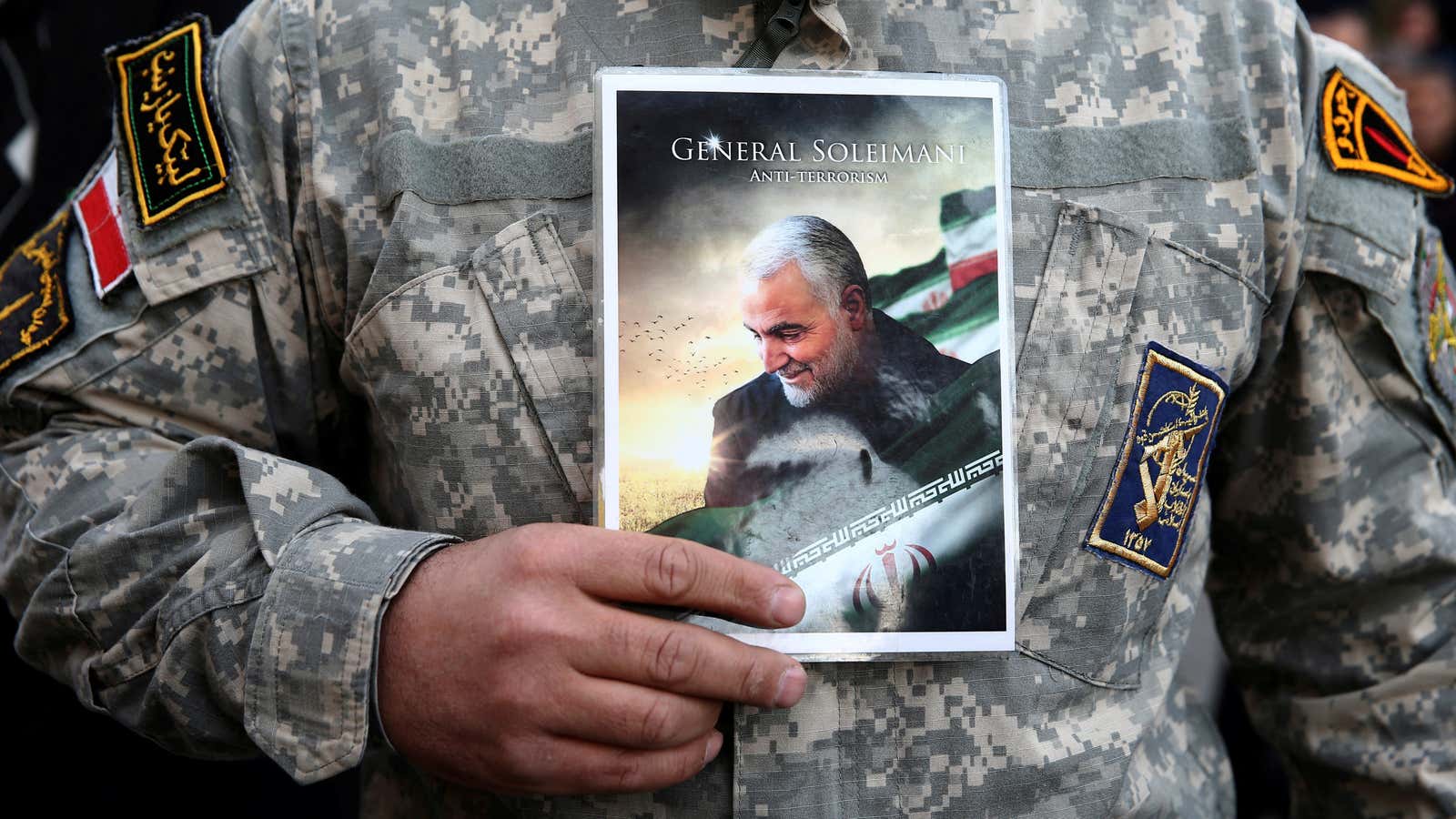US reaction to Iranian hostility has not always been proportional. When the country nationalized its oil industry in 1953—wresting control of it from Western petroleum companies—the United States orchestrated a coup, ousting the democratically elected Mohammad Mosaddegh.
And on Thursday, following violent Iranian-organized protests outside the US embassy in Iraq and apparent intelligence reports of an “imminent attack” against Americans, the US military assassinated one of the country’s most revered generals: the leader of the elite Quds Force, Qassem Soleimani. Now the two nations are at the brink of war.
It didn’t have to be this way. In the last 20 years, the US had several opportunities to leverage world events to reinvent its relationship with Iran.
After the Sept. 11 attacks in 2001, the United States weighed whether to invade Afghanistan, where the Taliban-controlled government protected al Qaeda leader Osama bin Laden. It also debated invading Iraq, an opportunistic move based on imaginary reasons. Both Afghanistan and Iraq were enemies of Iran. Soleimani’s forces had long supported the Afghan resistance against the Taliban. And Iran loathed Saddam Hussein. So in the run-up to the US war in Afghanistan, Soleimani shared vital intelligence with the Americans. He could have been an equally valuable ally in Iraq. American diplomats in the region saw an opportunity to “flip an enemy into a friend.”
But the opportunity was throttled when in 2002, to the shock of US diplomats, George W. Bush listed Iran as part of his “Axis of Evil.” All diplomacy with Soleimani stopped that day. The general would go on to influence events in Iraq for the next two decades, often to America’s peril, and to target with deadly force US interests across the region.
Another opportunity for peace came in 2015, when the Obama administration negotiated a deal with Iran to limit its nuclear weapons program in exchange for lifting sanctions. It was a major diplomatic achievement, but Donald Trump scuttled the deal when he reimposed sanctions, arguing it didn’t go far enough to limit Iran’s “malign” influence in the Middle East. Back-and-forth micro-aggressions followed, culminating in Soleimani’s death.
The region awaits the Iranian response.
This essay was originally published in the weekend edition of the Quartz Daily Brief newsletter. Sign up for it here.
